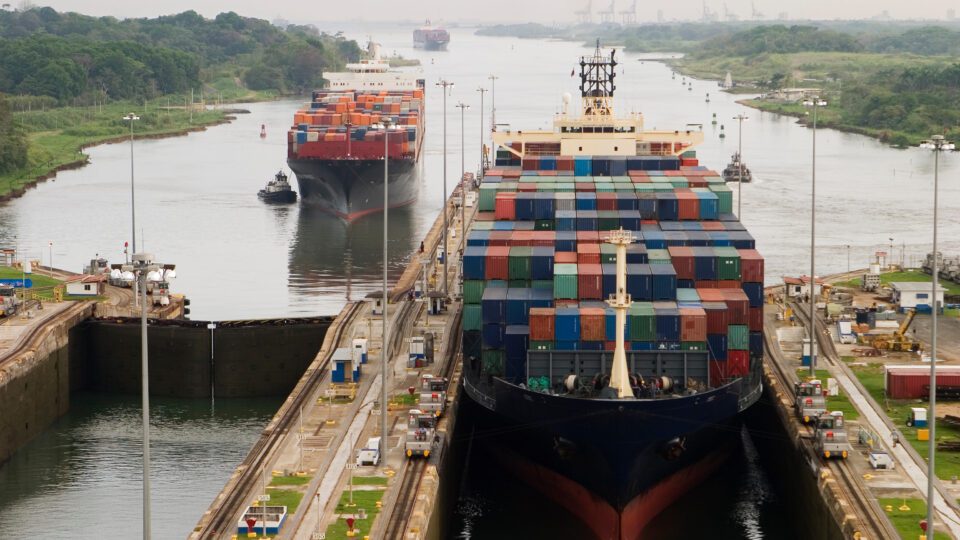The COVID-19 pandemic has, for all intents and purposes, ended. But the supply chain disruptions that it exacerbated have not fallen by the wayside as easily as disposable masks did, with the global movement of goods continuing to be impacted by one challenge after another — from war and terrorist attacks to drought.
As the Head of Supply Chain for Alibaba.com‘s North America B2B business, Yikun Shao is right in the thick of it. For 15 years he worked as a business and trade consultant for PwC, helping multinational corporations navigate the intricacies of customs, international trade and the global supply chain. In 2020 he joined Alibaba.com, where he is now tasked with developing the company’s strategy and building platform-level solutions around international shipping, logistics, cross-border trade and global expansion.

“[One of the] main reasons I joined Alibaba.com was to help the smaller businesses that were suffering from unexpected consequences and disruptions caused by the pandemic,” Shao said. “Ecommerce became not just a ‘good-to-have’ channel, but a must-have channel for small businesses. Alibaba.com’s mission had always been to help small businesses globally, something which is extremely meaningful to me and made it an easy choice following my time at PwC.”
With no end in sight to the challenges battering the global supply chain, Shao spoke with Retail TouchPoints about how companies, and small businesses in particular, can adapt and thrive in this volatile environment.
Advertisement
Retail TouchPoints (RTP): The supply chain has been a huge topic of conversation since the pandemic struck. How did you see that conversation shift in 2023, and where do you think it’s headed in 2024?
Yikun Shao: There were a lot of reactive steps taken during the pandemic — from the rapid adoption of technology and ecommerce to diversifying supply chains — and I think companies are now realizing the benefits of those actions. As a result, businesses are expediting their adoption of new tools and technologies and ultimately evolving their business strategy.
One example was the surge in ecommerce during the pandemic, which drove supply chain activity. Because of that increased volume in already-battered supply chains, small businesses adapted their logistics and distribution strategies. This allowed them to continue to meet the expectations of their consumer base [with things like] faster and more flexible delivery options. The technological adoption seen during the pandemic will continue, as a majority of small businesses have plans to adopt technology such as AI and chatbots.
Supply chain visibility also became an increasingly crucial element to a company’s operations, with more than one-quarter of small business owners indicating that on-time delivery and package tracking are the most important digital sourcing tools to meet their needs. The pandemic created a lot of disruptions and issues for businesses in establishing and maintaining desired inventory levels. Real-time visibility — including tracking shipments, inventory levels and production processes — was imperative for businesses to maintain efficient operations and make informed decisions.
Post-pandemic, the focus has shifted from managing disruptions to more proactive planning around supply chain resilience. While we’ve seen fewer mass-disruptions since the pandemic, unexpected disruptions such as those caused by extreme weather and geopolitical issues remain a test for a company’s supply chain capabilities in today’s world.
RTP: What’s your take on the situation with the Panama Canal right now? Is this something that retailers should expect to continue to grapple with in 2024, and if so, what solutions or alternatives do you see?
Shao: Disruptions such as the current drought facing the Panama Canal continue to drive businesses to seek greater visibility into their supply chain so that they can manage unexpected events and effectively meet customer demands. Unfortunately, we expect to see supply chain issues related to the Panama Canal continue as the region continues to experience its dry season through late spring. This will cause the channel to continue to narrow, further reducing ship traffic.
In response to these disruptions, we’re seeing a rise in the adoption of digital tools such as blockchain, artificial intelligence and predictive analytics. These technologies were first leveraged to enhance transparency, traceability and efficiency within the supply chain, but now it’s good for companies to leverage these tools on an ongoing basis. [They can] help them better make real-time decisions based on what they might face as a result of issues such as those in the Panama Canal, and when or how to seek alternative routes.
Other non-technological solutions that small businesses and their shipping partners could explore include other waterways or alternative transportation methods such as air cargo. Small business owners could also consider localizing their supply chain to reduce both the current and future impacts of threats posed to major trade routes.
RTP: What are the biggest challenges merchants should be prepared for in 2024 with regard to the supply chain. and how can they prepare themselves?
Shao: One major trend will be supply chain pressures shifting from the supply side to the demand side. This is the result of fewer disruptions, more certainties and more abundant shipping capacities to meet shipper needs. On the small business side of the equation, many businesses have excess inventory that they are trying to shed while also being prepared to meet spikes in customer demand. Initially this may seem like a positive as businesses can reduce order sizes to save money, but smaller orders can sometimes make it difficult to meet order size minimums or other requirements.
A bigger challenge we are already seeing play out is global economic conditions. We have seen the impact that inflation has had on both individual consumers and small businesses as they try to manage costs. Even as ocean cargo and air freight rates have decreased, prices remain vulnerable to unexpected volatility, and small business owners cite the rising cost of goods as their biggest inventory management concern. Fluctuations in shipping costs could force businesses to raise prices on already cost-weary consumers in a highly uncertain economic environment, making it difficult to balance expenses and maintain a strong consumer base.
Predicting fluctuations in customer demand through enhanced data analytics and developing contingency plans are the two major steps that small businesses can take to prepare themselves for the challenges ahead. In terms of managing supplier relationships, small businesses should pay close attention to contracts with suppliers to ensure that they have flexibility in the event that they need to adjust their operations.
RTP: What do you think of the newer option of crowdsourced delivery? Is this a viable alternative retailers should be considering?
Shao: I see crowdsourced delivery [where retailers employ a network of local, non-professional couriers to fulfill deliveries] as a trend to watch in the coming years, particularly as online retailers look for ways to fill order minimums and meet consumer demand for faster shipping. Researchers recently reported that by 2027, between 60% to 70% of retailers will be adopting this type of crowd-sourced delivery approach.
Crowdsourcing delivery can help retailers to increase their efficiency, manage expenses and improve their customer satisfaction levels. In the much longer term, though, it’s also worth pointing out that this “manual” approach may be replaced by more advanced technology, specifically automation such as delivery by autonomous vehicles or drones.
RTP: What steps can merchants take to futureproof their supply chain and processes for whatever might be coming down the pike?
Shao: Overall, businesses should continue to embrace ecommerce and digital solutions in order to increase efficiency and gain control of their supply chain. Improved visibility and control, increased certainty in the shipping and logistics operations and enhanced data analytics will certainly help merchants futureproof their supply chain.
In order to deploy timely solutions for possible supply chain issues, small businesses need to stay up to speed on industry trends, regulatory changes and global economic conditions. And then, taking it a step further, regularly assessing the risks and potential impacts facing supply chains will help companies to stay agile and limit potential negative impacts.









